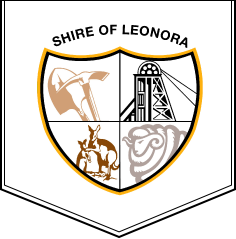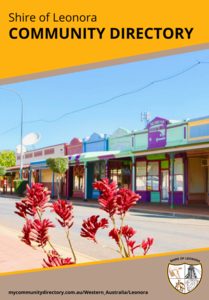Leonora Give Local
We are proudly supported by:
Visit the official Leonora websiteThe Give Local provides up-to-date information for community organisations who provide services in the Leonora area.

Traditional Owner Groups
-
Wangkatha
Phonetic Wongatha, Wongutha, Wankatja, Wongi or Wangai, is a language and the identity of eight Aboriginal Australian peoples of the Eastern Goldfields region.Description The Wongi or Wongatha/Wangkatha language peoples originate from the following areas; Coolgardie, Kalgoorlie, Leonora, Menzies and Laverton. The Wongi group consists of eight peoples: Maduwongga, Waljen, Ngurlutjarra, Ngaanyatjarra, Bindinni, Madatjarra(?), Koara (Kuwarra) and Tjalkatjarra. The Wongi, being very active in their traditional country, were the first to show European and British explorers their country, notably water and precious minerals in their country. The Wongi showed Irish explorer and discoverer Paddy Hannan his first gold nugget. Being a valuable stone, the Wongi worshipped it due to their traditional Tjukurrpa (Dreaming lore) under their traditional practices and governance systems. Still today, the Tjukurrpa is respected and highly revered. They sporadically fought White settlers who came to the area for gold in the 1890s. During the early 1900s the Wongutha/Wangkatha were considered the "most fierce, wild and untamable" of all Aboriginal people in Western Australia. The Australian Government did not know what to do with these people. Therefore, white missionaries from New South Wales disembarked to Western Australia to establish an area that is now known as the Mount Margaret Aboriginal Community. Many of the Aboriginal people who are of the Wongutha/Wangkatha language were part of Mount Margaret. All Aboriginal people who were placed in Mount Margaret were educated by the western system and learnt about Christianity. There came other neighbouring language/tribal groups who spoke similar languages and shared Tjukurrpa, such as the Pitjantjatjara and the Ngaanyatjarra. Other foreign language groups with different languages and customs also were placed at Mount Margaret Mission, which included Ngadju, Tjupan and Mirning.





